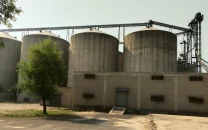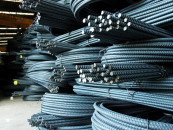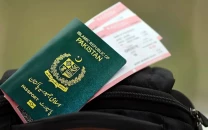Financing Orange Line – was the solution optimal?
Question is whether we got best deal on project

PHOTO: APP
China is emerging as the largest public transport metro market. The country has 26 cities with metro systems as of 2016, whereas the government has approved another 39 metro systems for the future.
Metro train: Lahore’s Orange Line wins Rs20b tax exemptions
Length of the metro lines has exceeded 3,000 kilometres. Population for cities with metro system ranges from Shanghai, with 34 million inhabitants, to Hohhot, with 1.9 million people. Even India can now boast of eight cities with metro systems having a line length of 324 kilometres. Ongoing construction on metro lines will add another eight cities and expand line length by 520 kilometres.
Among the 10 most populous countries, only Pakistan and Bangladesh remain without an operational metro system for their large urban centres. Lately, both countries have embarked on building rail mass transit systems in Lahore and Dhaka respectively.
However, in Pakistan, we are witnessing a vicious campaign against the Orange Line project in Lahore. Critics are condemning the government for neglecting social sectors and ruining urban heritage at the cost of the metro system. Nevertheless, it is pertinent to mention here that the construction of metro systems and development of social sector are not a mutually exclusive phenomenon. And precedents of preservation of urban heritage in the wake of metro systems are available at different locations. So, the impediments are not insurmountable.
Debate needs to move from the utility of metro systems to finding economical solutions for building metro systems in more cities. Pakistan is becoming an increasingly urban society, with transportation gridlock emerging as a menacing issue affecting economic productivity and competitiveness. Obviously, the metro system alone is not a remedy for the structural problems of having an integrated urban transportation infrastructure. But it remains a vital component of the solution for urban transportation woes.
Cost
Now, let us take a look at the financing structure of the Orange Line project. The project cost is $1,626 million for a track length of 26.2 kilometres, which averages near $62 million per kilometre. Further details on the exact equity and debt components of the project are still sketchy. The government is claiming that the Exim Bank of China will be providing the entire debt portion to the tune of Rs162 billion, which converts to $1,543 million. The balance gap of $83 million or Rs8,715 million will be met by provincial government. The debt-equity ratio of the project will be 95:5 – making it a largely debt-financed project. And this loan was given on the condition that the project will be awarded to Chinese companies only. The Chinese government gave names of two companies for the bidding process, for which the government of Pakistan had to relax Public Procurement Regulatory Authority rules to allow only them to bid.
Comparison
Now, the question arises whether we got the best deal on the matter. For this purpose, let us take a comparative look at the project structure of Hyderabad Metro Rail in India. Envisaged as the largest metro rail project under Public-Private Partnership (PPP) mode, the project cost of the 72-kilometer has escalated to around $3 billion due to delays.
If cleared, Orange Line may be delayed by a year
In per kilometre terms, the metro will cost $41 million and will be operational by 2018. Larsen & Toubro, an Indian engineering conglomerate, was awarded the PPP project, with a 35-year concession period.
The firm has raised 70% of the project cost as debt from a consortium of banks in India. The deal was awarded as the Global Engineering Project of the Year Award by the Global Infrastructure Forum, USA. Besides Hyderabad, India has also built the first completely privately financed metro system in Gurgaon.
And even if we look at Chinese precedents, the country has developed the largest PPP market of metro rail systems. It commenced with the line-4 of Beijing metro system in 2004, which was followed by a number of other cities. Its success can be gauged by the fact that Hohhot, a city of 1.9 million population, is building a 22-kilometre length of metro system under PPP mode.
Looking forward
Overall, the world is also witnessing increasing number of local city governments engaged in financing and managing their metro rail systems. It offers an economical approach in optimising benefits of such capital-intensive projects. Pakistan has to diversify its options to the development of rapid transit systems in its simmering cities.
Sindh govt to launch ‘City Bus Service’ in Karachi
There is no looking back on the building of such systems across all major urban agglomerations in the country. We just need to be more creative and transparent in structuring such deals for getting higher value for money.
The writer is a director in Policy Research Institute of Market Economy and can be reached at zia.banday@outlook.com
Published in The Express Tribune, March 13th, 2017.
Like Business on Facebook, follow @TribuneBiz on Twitter to stay informed and join in the conversation.



















COMMENTS
Comments are moderated and generally will be posted if they are on-topic and not abusive.
For more information, please see our Comments FAQ